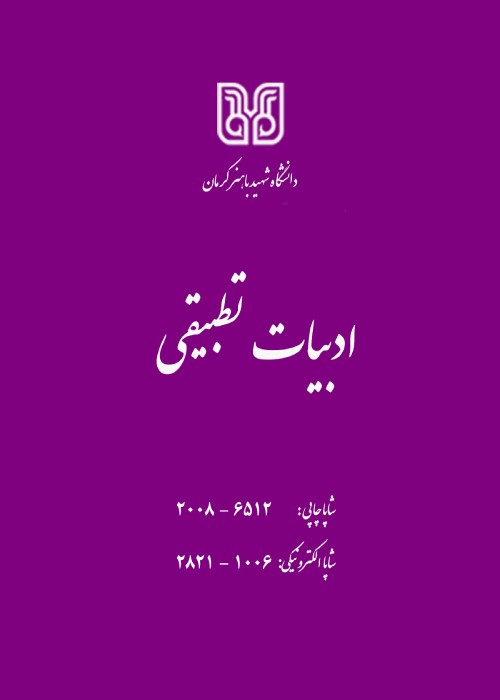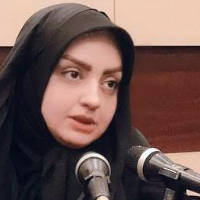Analysis of the presence of Eastern elements in Frankenstien Mary Shelly
The valuable Frankenstein or Modern Prometheus novel written by Mary Shelley in the early nineteenth century is a Gothic-style science-fiction. What distinguishes Frankenstein while simultaneously showing the features of science -fiction is its Gothic style and induction of a horror genre over the novel atmosphere. The Gothic novel found its place as a literary form in the world literature from the 18th century. The term Gothic is associated with architecture and refers to a type of European construction that was common in the Middle Ages but was not influenced by Greek and Roman architecture. The atmosphere of horror in the castles and mysterious places full of ghosts establishes the semantic connection between Gothic architecture and its fiction style. The induction of this terror in these novels is the result of the fear present in the mind of a writer who tends toward modernity in the struggle with traditions but still adheres to the latter. In Frankenstein's novel, the creation and appearance of a creature whose actions are Satanic but at the same time accompany the reader's emotions make the core of the novel in the form of an innocent being that had no role in his creation. The novel is written in the form of letters, following the style of Oriental stories and having a story within a story. There are five narratives in the novel: Walton's letter to his sister, the life story of Victor as the creator of the monster, the story of Frankenstein from the beginning of creation and what he commits in the course of the story in revenge, the life story of the hut dwellers, and the story that Safie narrates for the hut dwellers and the readers of the novel. The present study has considered the Oriental themes and concepts in the text of the novel while analyzing their characteristics and formation.
The present study has used a descriptive-analytical method. First, the documents were collected through library surveys and available resources in Persian and English, after which they were reviewed and analyzed. The present study seeks to find answers to these questions: First, what is the primary spark of the presence of Oriental elements in Frankenstein’s novel? Second, how can the presence of these elements be analyzed based on the environmental and inter-textual factors? Given the allusions in the text of Mary Shelley and the Oriental Thoughts, as well as the internal structure of Frankenstein's novel, it seems that the author had the translation of the “One Thousand and One Nights” novel and has been under great influence of its internal stories. Besides, the author’s familiarity and communication with a group of the greatest English poets and writers, including Lord Byron, can be effective in strengthening the assumption regarding her familiarity with the Oriental themes. This study has taken a comparative approach based on the American School, along with the use of some inter-textual principles in describing similarities. According to the principles of this school, there is no obligation to prove such a claim as the author’s direct familiarity with Oriental ideas, but the existing similarities can be formed through inter-textual elements and various factors.
According to studies conducted, the presence of Oriental elements in Frankenstein's novel can be divided into two categories: The first one includes hyper-textual factors that represent the author's familiarity with the East and its influence on her in writing the novel. The second category is associated with direct references to the East and Oriental thoughts across the novel.Mary Shelley and her husband's acquaintance with Lord Byron is an example of hyper-textual references. Lord Byron explicitly mentions his acquaintance with Iran in his poems. Another instance includes the style of the novel’s authorship, using a story within a story or internal stories as the style of The One Thousand and One Nights. This book was translated into English and French at that time and attracted the attention of Western writers. The novel includes five narrations in the form of letters or story-telling of a character. The opening story (Nomber1), which is in the form of a letter from Walton to his sister, describes his acquaintance with Victor Frankenstein in the Northern Waters. The second story (Number2) is narrated by Victor and is the core narrative which has several internal stories. The third story (number3) is about the monster creature telling the story of how time passed from the time it was separated from Victor until then. Then, the next story (number4) is about the old man and his children who live in the hut and are whose life is observed by the monster creature. Finally, the last story (number 5) is bout an Arab girl called Sophia, and is narrated through a letter in the hands of the creature. What the monster creature performs in that part of the story related to the murder of William, Victor's little brother, and then using a trick to accuse the servant is one of the repetitive themes in the stories of One Thousand and One Nights. The monster creature steals the beautiful necklace of the murdered child and puts it in the pocket of Justin, the housekeeper, while he is asleep in the barn. This is a familiar image that often occurs by jinns or demons in The One Thousand and One Nights tales, based on which they unjustly accuse someone to reach their beloved. The views and opinions of the main character of Frankenstein's novel, Victor, about the East are among the contextual implications of the text. Victor's friend, Henry Clerval, also studies Oriental philosophy. From the beginning of the novel, Mary Shelley shows her familiarity with the East through the characters' conversations, showing the protagonist as a character fascinated by Oriental ideas. In another part of the story, narrated by Frankenstein’s monster, the life of the inhabitants of the hut is represented while Safie, the girl from the East, lives with them. The inhabitants of the hut choose a book named The Decline of Empires by Wiley to teach the girl their language because they regard its style as an imitation of Oriental authors.
The study of the author's life and works and the explicit references in the text of the book show the influence of the East and the Oriental fiction style on her as the most important factor. The impact of Oriental fiction on Frankenstein's novel can be observed and explored in the inter-textual and hyper-textual dimensions. Inter-textual factors are those references made by Victor, Henry Clerval, Safie, and other characters. Oriental philosophy, Arabic, and Persian languages, and the mysterious Oriental works are mentioned in several places in the book by Victor, the main protagonist. Also, Henry Clerval, a close friend of Victor Frankenstein, studies Oriental philosophy and Oriental languages. He accompanies the protagonist and is the symbol of philosophical wisdom and Victor’s guide, who eventually becomes the victim of the monster creature. The three victims of this story represent three currents of thought that are destroyed by the monster creature. William, Victor's younger brother, represents the childhood innocence ignored in the modern world. Henry Clerval represents wisdom and philosophy that are suppressed in opposition to science, and Elizabeth is the symbol of love and affection that becomes faint and doomed to be ignored in the modern world. This uncontrollable creature does not respect the holiness of any of these blessings and tries to diminish them, reminding the consequences of his misdeeds. Consequences of entering the realm of the gods and transgressing the servitude await the elite perpetrator, and he should confront the inevitable and miserable fate of his rebellion. Hyper-textual factors such as the technique taken from the One Thousand and One Nights, in which a story is narrated within a story, are examples of Oriental elements in this novel. Five narrative lines make up the total novel. The presence of fantasy elements and the Gothic style brings the story closer to the fairy tales that are the most obvious example available in the One Thousand and One Nights at that time. Another instance is the presence of some story themes that are very similar to Oriental themes, such as the trick that the monster creature uses to accuse Justin, the housekeeper. Another Oriental element is the presence of an Arab girl named Safie in one of the stories told to Victor by the monster creature, and the letter in which the girl describes her life presented as a witness to the story. This is another support of the evidence on the structure and idea of the One Thousand and One Nights stories, which narrate the male domination of women and the oppression whose victims were women.
- حق عضویت دریافتی صرف حمایت از نشریات عضو و نگهداری، تکمیل و توسعه مگیران میشود.
- پرداخت حق اشتراک و دانلود مقالات اجازه بازنشر آن در سایر رسانههای چاپی و دیجیتال را به کاربر نمیدهد.



